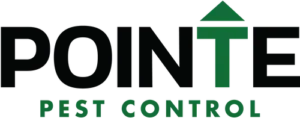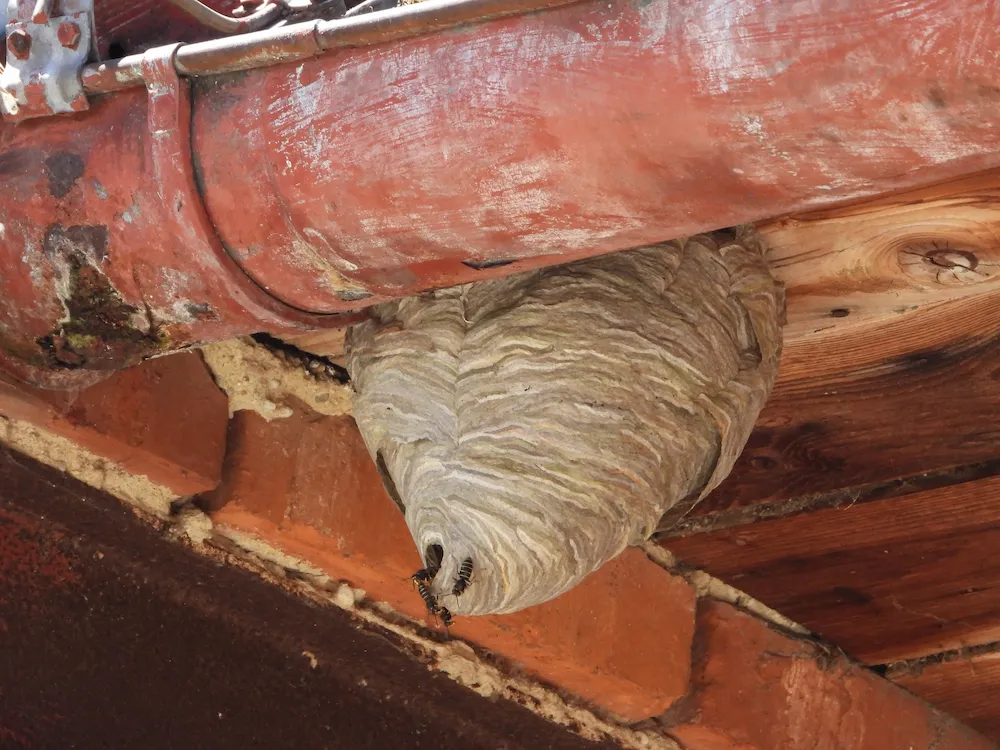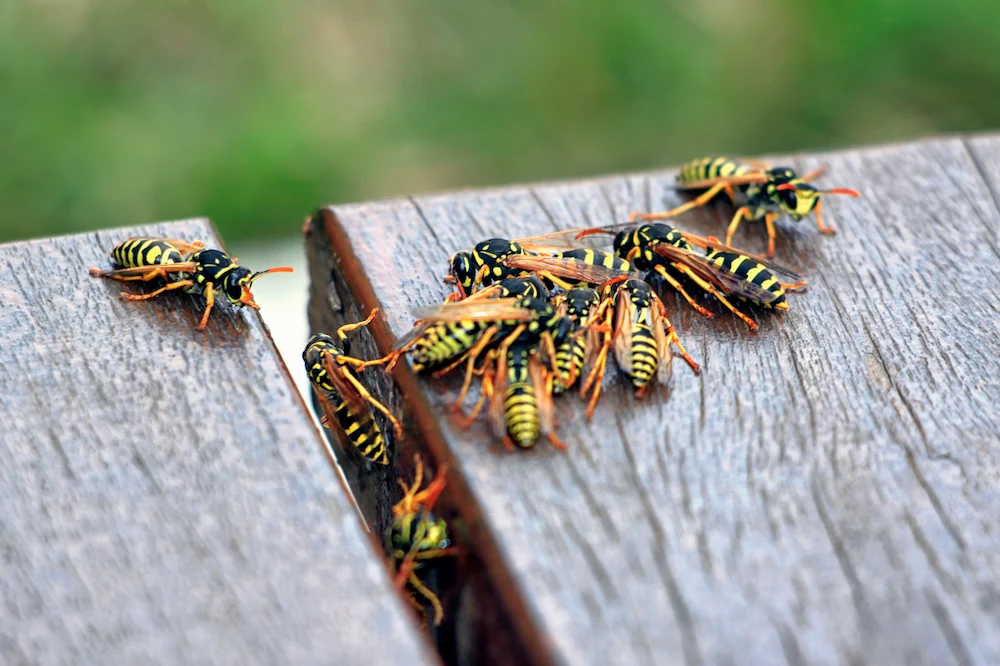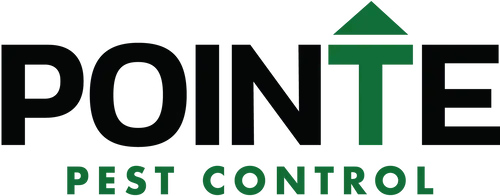Why Are Yellow Jacket Nests Found In These 5 Spots?
Why Are Yellow Jacket Nests Found In These 5 Spots?
Summary: Yellow jackets use the same building materials as other stinging pests, but their nests are found in more interesting locations. This blog explores the 5 most common locations for yellow jacket nests, as well as the signs of an infestation. Pointe Pest Control provides thorough stinging pest control services.
Yellow jackets are more interesting than you think.
They have a lot of the shared qualities of stinging insects: giant colonies, organic nests, a sharp stinger with a temper to match. But yellow jackets have unique habitats. Sure, they use the same materials (chewed wood fibers) as the other pests, but the locations are a bit different.
The first step to preventing pests is to be aware of their life cycles and habits, including their preferred living situations. Let’s discuss five of the weirdest yet most common places that yellow jacket nests are found.
Underground
As simple as it sounds, this is the most common nesting site for yellow jackets. Any holes or burrows in the ground can be utilized by a growing yellow jacket colony. Their favorites are empty rodent burrows and hollowed-out space in the earth, like in a garden. As the colony’s numbers grow, the workers chew through the ground to expand the space.
The main issue with this nesting location is how easy it is for humans and animals to accidentally disturb it. If the nest is anywhere near the grass, the pests will be agitated every time someone mows the lawn. Watch out for hidden yellow jacket nests when you’re outside. A small pile of dirt outside the entrance hole and lots of yellow jackets in one area are the two main signs of an infestation.
The House
As much as yellow jackets love the outdoors, they won’t turn up their noses at the idea of nesting in our cozy homes! Their nests are often found in attics, wall voids, and exterior walls. Yellow jackets have the benefits of additional warmth and protection when they live in a house. Although the workers die off each winter, the queen has a reliable shelter for the colder months.
One of the worst parts of having a yellow jacket colony inside your house is that they’ll chew through the drywall to get extra nest material. This not only damages your home, it also allows the pests access to other parts of the house. If you hear scratching or buzzing anywhere in the house — or you actually see a yellow jacket or two — there’s a good chance a nest is nearby.
Tree Stumps
This one is more common of Eastern yellow jackets, but any yellow jacket species can technically use this space. A tree stump that’s hollowed out to any degree is vulnerable to a yellow jacket invasion. Since these pests like hiding in cavities, they’ll enjoy nesting inside this sturdy place that offers them more protection.
A tree stump that gets a lot of sun is even more ideal for yellow jackets since they thrive in the heat. It’s also a great winter shelter for a queen yellow jacket, who can then start her new colony at the start of spring. Yellow jackets shouldn’t have a shortage of food since plenty of pests would enjoy living near a tree stump. Our advice? Remove any tree stumps from your yard that don’t serve a purpose anymore.
Eaves
The eaves of any house or building are often used for the site of yellow jacket nests. The elevation and structure both provide the pests with protection from the weather and any predators since they have more hiding spots. It’s also usually warmer around the eaves since heat rises, so yellow jackets that live here will thrive in the summer.
If you see a stinging bug fly up towards the eaves or patio covering and crawl inside the structure, there’s probably a nest in there. This can be pretty risky depending on nest’s location. If there’s a window nearby, the yellow jackets may try to invade the structure. There’s also a risk if it’s near a door; the pests won’t like people going in and out of the house very much!
Objects On The Ground
This is a pretty broad category, but it’s popular enough to mention. Anything that has an opening and isn’t disturbed a lot can be used for yellow jacket nests. This includes concrete blocks, rock piles, hollow logs, and flower boxes. A yard that’s cluttered with abandoned building materials and buckets is at risk of being invaded.
The clear risk with these nesting spots is that they’re easy to disturb. All it takes is an accidental kick to their rock pile to send the yellow jackets into a frenzy. The best way to avoid this is to avoid keeping organic clutter and debris around the yard. If you need to keep certain items out there, keep an eye out for any yellow jackets looking for a fight.
Signs To Spot
We hinted at these when discussing each spot, but it’s important to have an idea of the warning signs. If you see any combination of these signs, we suggest contacting your local pest control provider for immediate nest removal.
The signs of a yellow jacket colony and nest are:
- Multiple yellow jackets in one area
- Tiny holes in the house’s exterior
- A ball-shaped softwood nest (about 6-8 inches wide)
- Buzzing or scratching sounds in the walls
- Yellow jackets crawling on the ground
- Outdoor trash cans instantly attracting yellow jackets
- Yellow jackets being more aggressive in a specific area
Stinging Pests Can’t Hide From Pointe!
If you find a yellow jacket nest in your home or on your property, do not try to remove it yourself. These are some of the most aggressive pests around, and attempting to eliminate an active colony on your own could lead to a lot of painful stings that could’ve been avoided. Instead of taking on a yellow jacket colony yourself, leave the stress of stinging pest control to Pointe Pest Control!
Our experienced technicians have the proper treatments and safety equipment for eliminating stinging pest infestations. We first diagnose the situation by determining the species and extent of the infestation, then use our observations to create a customized treatment plan. For a free quote on our reliable stinging (and general) pest control services, contact us today!
Citations
Brancato, V. (n.d.). Yellow jacket removal: Identifying yellow jacket nests. ABC Humane Wildlife. Available at https://abcwildlife.com/blog/yellow-jacket-removal-identifying-yellow-jacket-nests/ (Accessed on January 21, 2025).
How do wasps build their nests?. (n.d.). Insight Pest Solutions. Retrieved January 21, 2025, from https://insightpest.com/how-do-wasps-build-nests/
What you need to know about yellow jackets. (2024, March 15). Gardener’s Supply Company. Retrieved January 21, 2025, from https://www.gardeners.com/how-to/yellow-jacket-faq/8755.html?srsltid=AfmBOoqx44Wlcn1xppM8Yi1k94RtmHmJw0NgCA0efn6g6QO-VgIgDK-s
Request a Free Quote Today
(We do not share your data with anybody, and only use it for its intended purpose)








